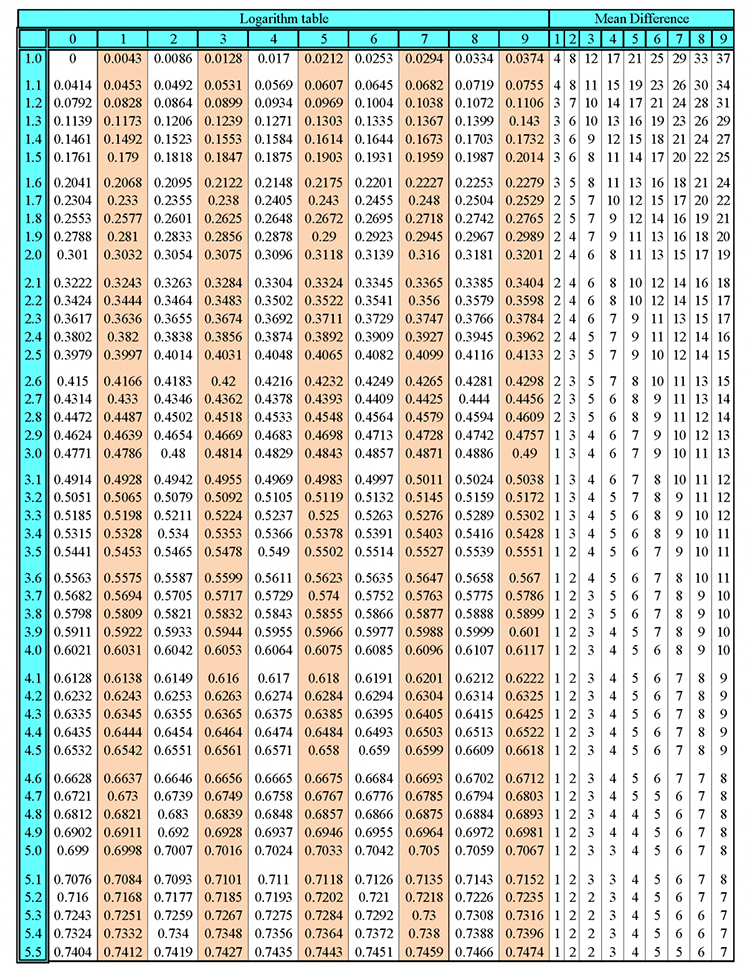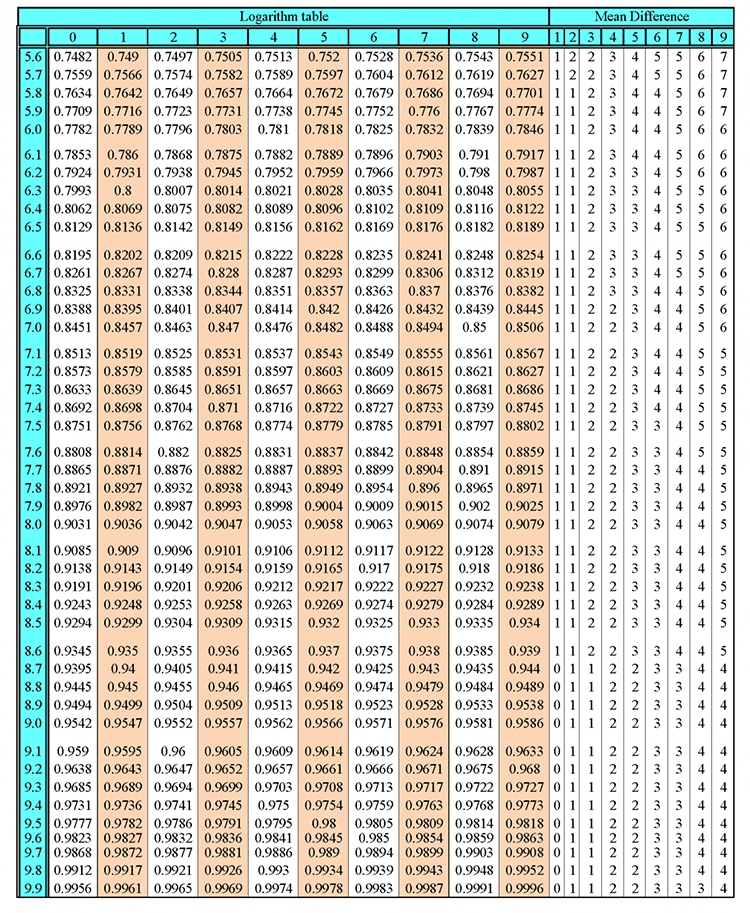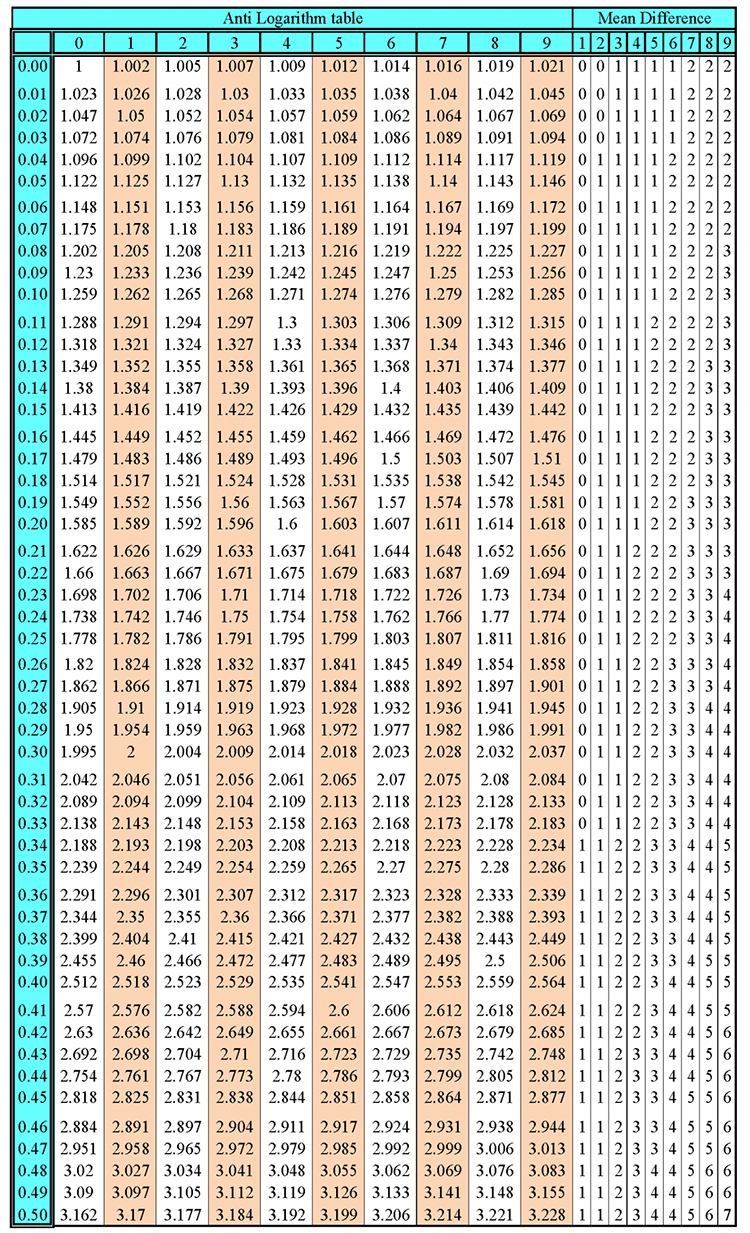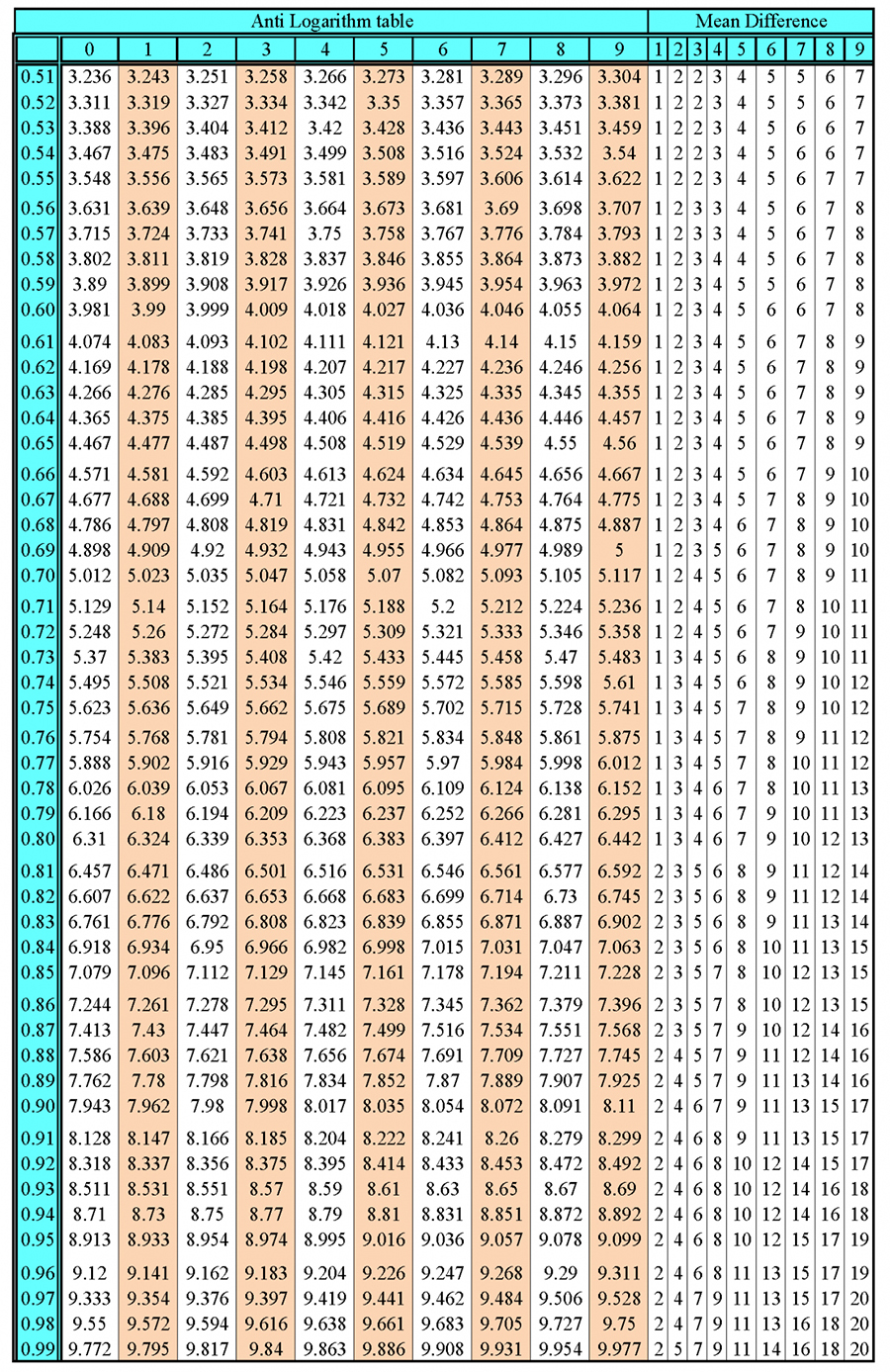Surface area of a cone
The formula for the surface area of a cone is:
`pir^2+pirl`
Where
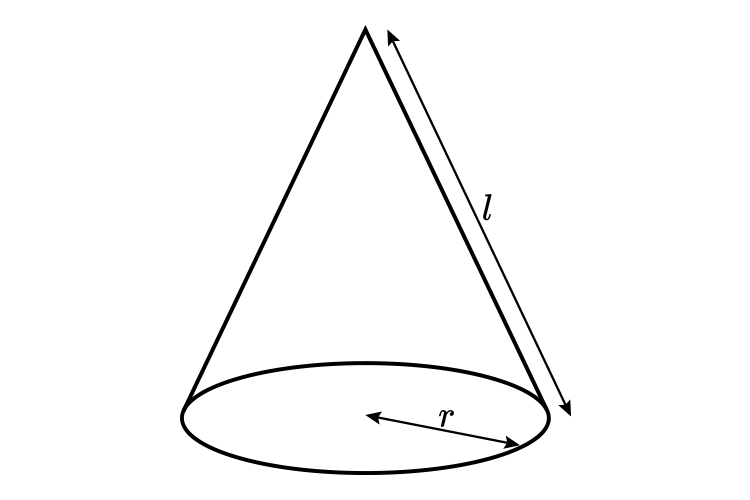
This formula is easier to remember if you imagine pulling apart a cone to get
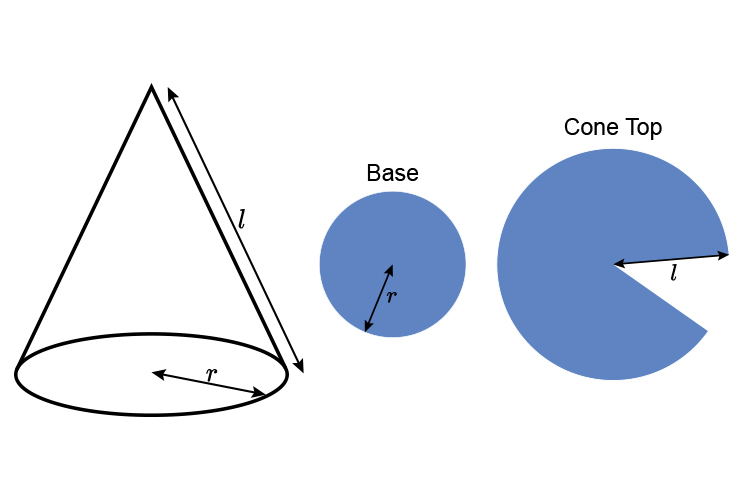
The area of the base is:
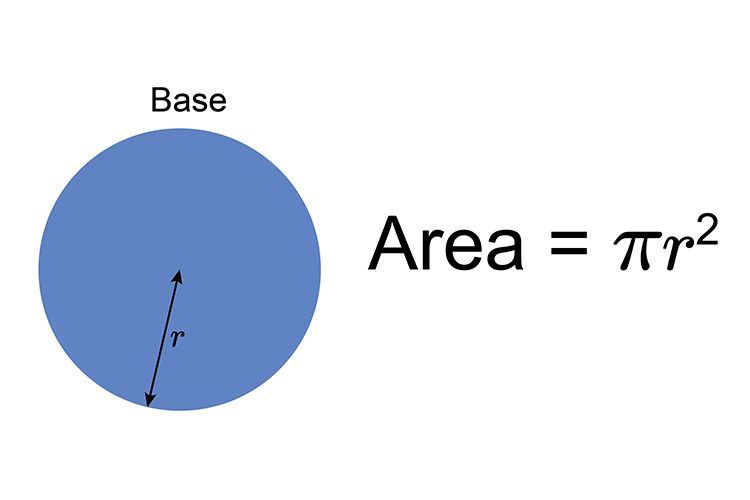
The area of the cone top is:
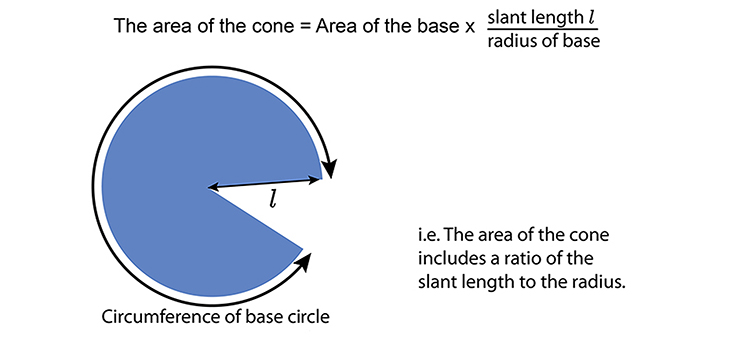
The area of the cone top = Area base x ratio slant to radius
The area of the cone top = `\pir^2\timesratiol/r`
The area of the cone top = `\pir^2\timesl/r`
This goes to:
The area of the cone top = `\pirl`
Summary
Area of a cone = Area of base + Area of cone top
= `\pir^2+\pirl`
Interesting example
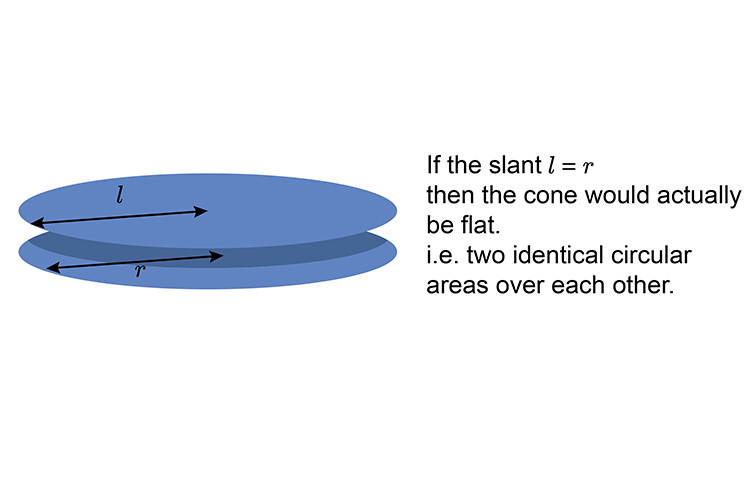
And then pulling the cone apart the surface areas would look like this:
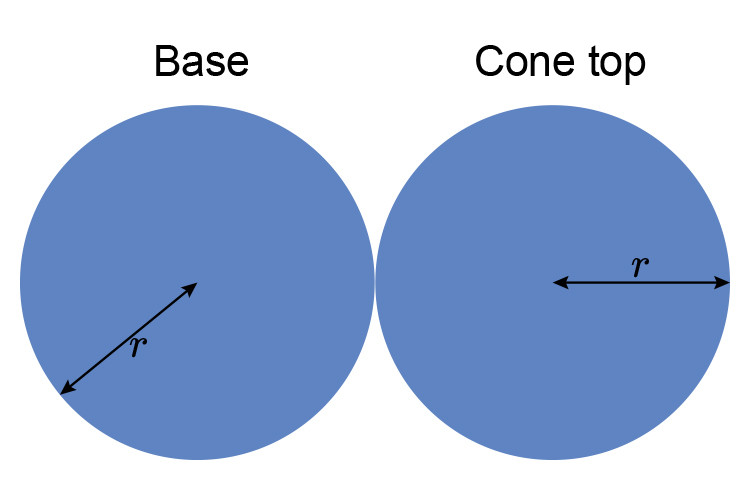
That is two full areas of circles.
Or
`\pir^2+\pir^2`
Which becomes: `2\pir^2`
So the surface area of a cone where the slant is the same as the radius is equal to the area of two base circles `2\pir^2`
But this would never be a cone and therefore doesn’t exist under the heading “cones”.
So the way to remember the surface area of a cone is to think:
`\pir^2+\pir^2`
Only when the slant is equal to r
When it isn’t (which it can’t be as a cone).
Then the surface area of a cone must be:
`\pir^2+\pirl`
